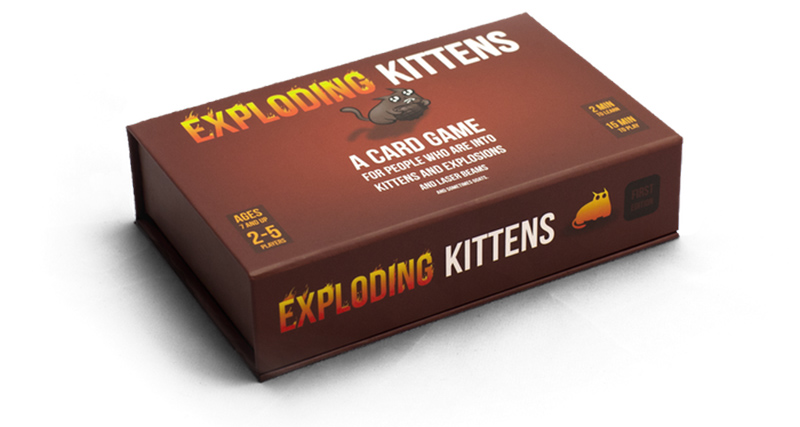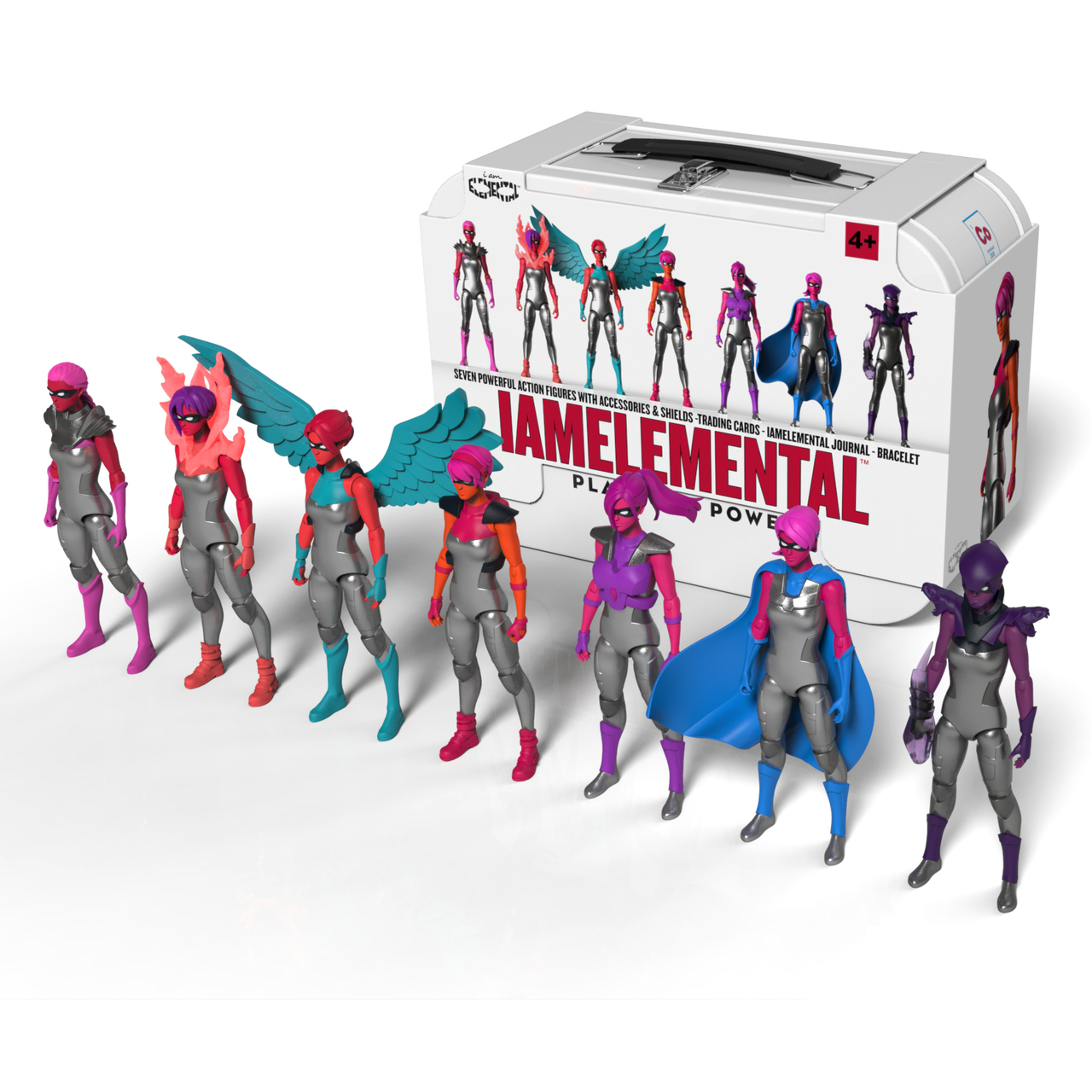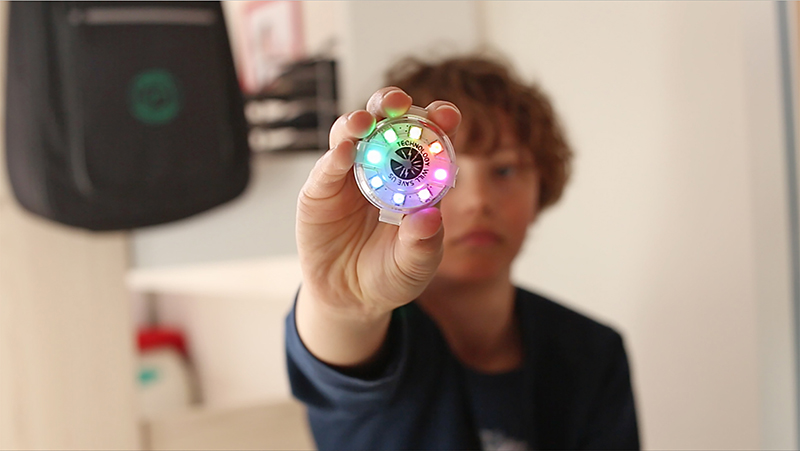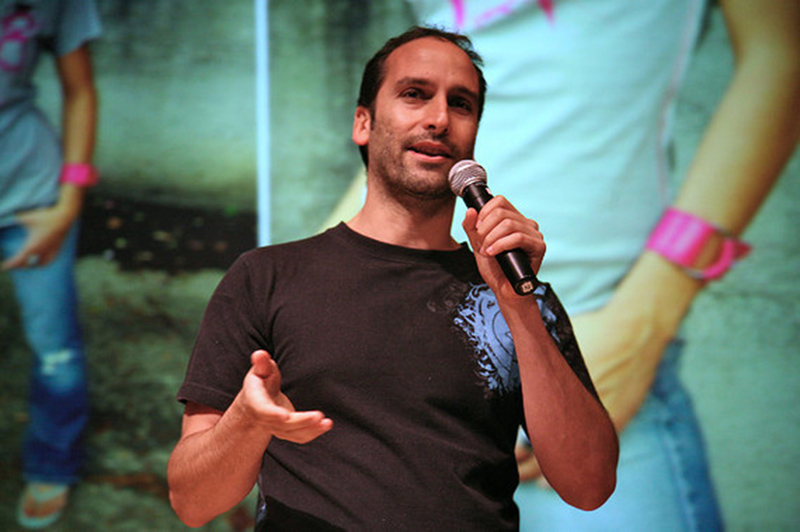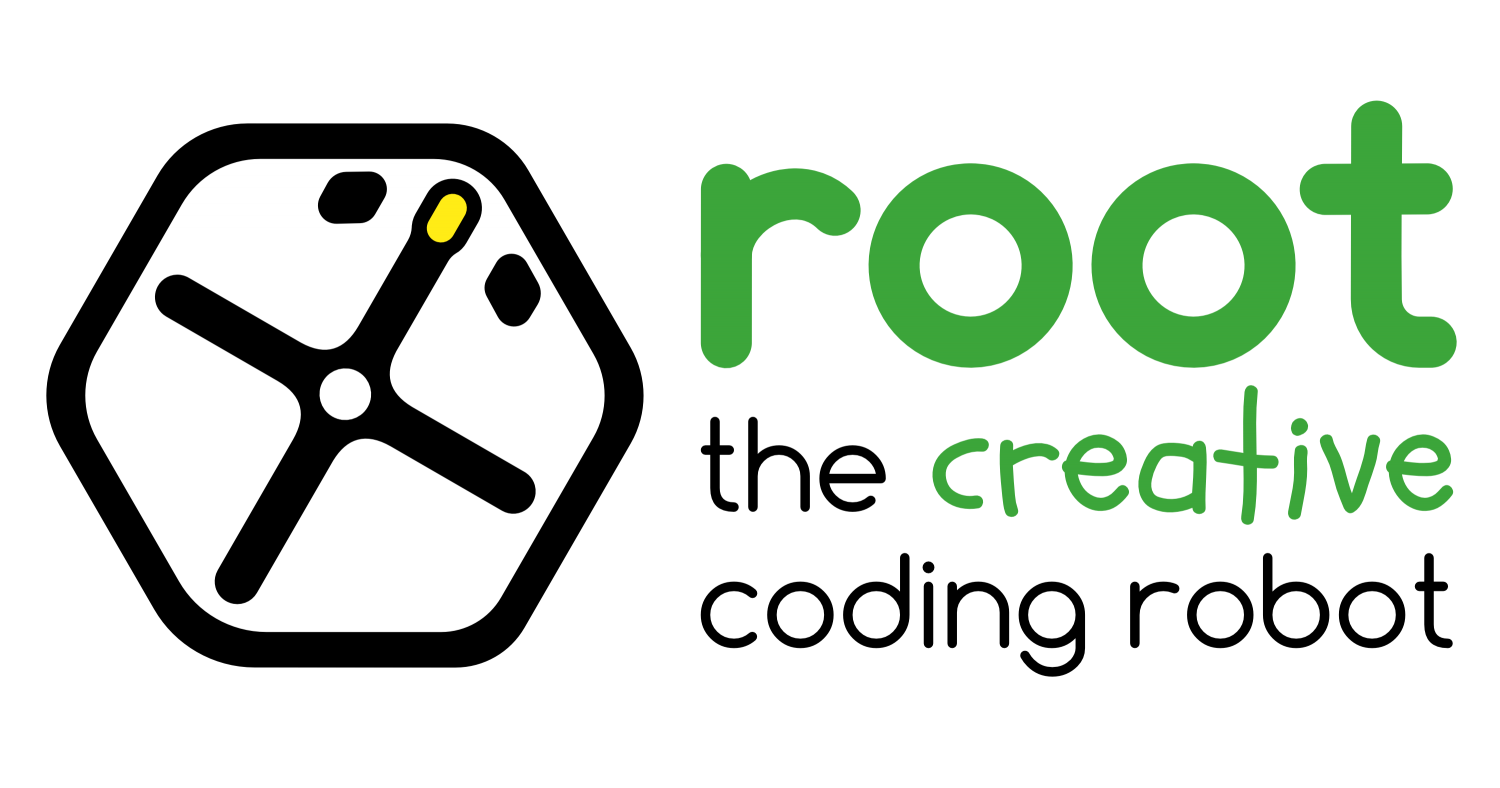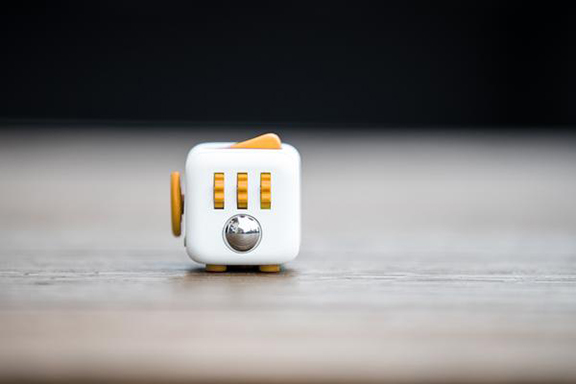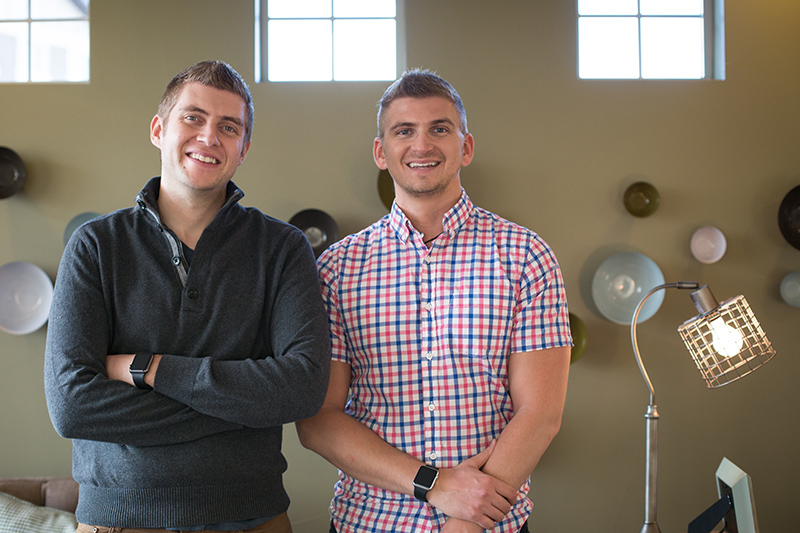Bringing innovative products to the market is easier than ever thanks to Kickstarter. The crowdfunding site proves that user interest and involvement in a product’s creation can be invaluable. Many of today’s toys and games got their start with a cute video and a humble request for consumer support. We chatted with a few toy creators—each of whom saw major success with their campaigns—and asked them to discuss their Kickstarter experience.
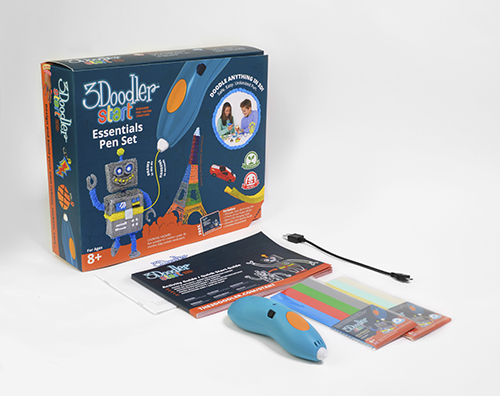
3Doodler
What if kids could take their imagination to new heights and draw in 3-D? Thanks to 3Doodler, they can! WobbleWorks CEO Maxwell Bogue and his team shrunk down and simplified the technology of 3-D printing into a fun and portable tool for kids. When Bogue and his team launched their Kickstarter for the 3Doodler 3D-drawing pen back in 2013, the project reached its $30,000 goal in mere hours and raised more than $2 million by the end of the campaign. WobbleWorks later launched two more successful campaigns with 3Doodler 2.0 and Star Trek-themed kits.
 The Toy Insider: What has changed for 3Doodler since its Kickstarter debut?
The Toy Insider: What has changed for 3Doodler since its Kickstarter debut?
Max Bogue: WobbleWorks was started as an R&D company for the toy industry… where our goal was to create items and then sell them to the large toy companies… So once we launched 3Doodler, we stopped being an R&D company and started being an actual product company and we went from three people to 10 pretty quickly to get around the fact that we had to make physical products as opposed to just sell a contract.
TI: What made you turn to Kickstarter to launch 3Doodler?
MB: So at the time when we presented 3Doodler to the toy industry, there was not an overabundance of interest. I think a lot of people couldn’t be aware of what the long-term vision was. … So we turned to Kickstarter originally because one, it would help fund the entire endeavor and demonstrate not only to other people but to ourselves whether or not this product was something that the world wanted. And second off, it helped us to fund the entire endeavor and pay for tooling and make the development and set up the factory and get everything going.
TI: What was your reaction to 3Doodler’s initial Kickstarter success?
MB: We were absolutely flabbergasted about the response level and seeing that people really wanted to have this product … It helped us to fund the company and not have to seek outside funding so we’re completely independent. So it was really quite amazing and quite encouraging … We certainly didn’t expect the rate at which it took off at.
IAmElemental
Julie Kerwin and Dawn Nadeau began with a simple question to the toy industry. “Where are the action figures for girls?” With that and the goal of creating heroic female role models for girls, IAmElemental was born. The 2014 Kickstarter project danced in the media spotlight of Time Magazine and Forbes during its campaign, which reached its $35,000 goal in two days and received more than $160,000 overall. The action figure line saw a second expansion in 2016 with the creative team constantly looking toward the future. Kerwin, now IAmElemental’s “creative superpower,” is now incredibly grateful for Kickstarter’s help in bringing these figures to market.
The Toy Insider: What was your reaction to the positive press that IAmElemental received during its campaign?
Julie Kerwin: Well, obviously it was incredible and unexpected. To be honest with you, while I spent a tremendous amount of time, almost two years in development before our Kickstarter launch and while we really really focused on how to create the best Kickstarter campaign we could, we really didn’t do any press or PR-related activity prior to the launch. So the response that we had when we launched was immediate and dramatic.
TI: Can you describe what it was like to come up with the video for the Kickstarter campaign, and to think of rewards, and so on?
JK: Yeah, I watched hundreds of Kickstarter videos. No, really! When I say hundreds, I mean hundreds of Kickstarter videos. … I didn’t have any consulting or guidance, but I did as much of my own kind of research as possible… I felt very strongly that it had to ask and answer a question right up front, engage… So there was a lot of time and effort put toward first the structuring of the video and then the script and the storyboard of the video. I would say that I spent kind of, y’know, as much time on that aspect on a relative basis as we did toward the design of the figures.
TI: What lessons did you take away from your Kickstarter experience?
JK: One of the things I do say about Kickstarter campaigns is that it’s a little bit like childbirth. You almost can’t describe it until you’ve experienced it. … It’s a real trial by fire, but it’s a wonderful, wonderful opportunity. It really breaks down the barriers and it democratized the process of how one can, in fact, bring an idea to life… And so I think it’s a wonderful, wonderful thing.
Mover Kit
Computer science and coding are fields of ever-growing importance in our technology-driven age, but they can be quite complex and difficult to learn. Tackling that complexity to get kids interested in those fields is the mission statement of STEM toy company Technology Will Save Us (TWSU). The Mover Kit is a wearable coding light-up toy that not only received more than twice its initial Kickstarter goal of $50,000 in less than two days, but also received media attention from sources like Forbes and The Wall Street Journal, and was even featured as Kickstarter’s Project of the Day. TWSU CEO and co-founder Bethany Koby discussed how the Kickstarter community helped to push the Mover Kit forward.
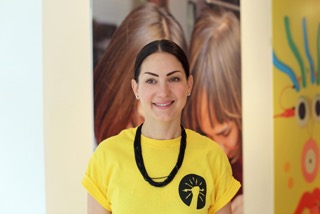 The Toy Insider Why did you decide to use Kickstarter to launch your product?
The Toy Insider Why did you decide to use Kickstarter to launch your product?
Bethany Koby: Kickstarter has this incredibly captivating community of people that want to be a part of bringing new things into the market and that just felt like a perfect way to leverage our desire to really launch in-community. … It really almost forces us to create a real narrative around the product, not just to put something in the world, but to really explore and celebrate the process.
TI: On May 18, 2016, Mover Kit was featured as Kickstarter’s Project of the Day. What was your reaction to your campaign receiving that kind of attention on Kickstarter?
BK: We were obviously really pleased that Kickstarter felt compassionate about the product and thought that it was such a great product for people to be focusing on. When they do that, that really galvanizes their community and focuses them on a particular product, which is great!
TI: Do you think the Mover Kit would have ever come to fruition without the use of Kickstarter?
BK: I think that it would have, but probably not in the same way. … I think another point around using Kickstarter, which is super important to us, is that we also use it as an opportunity to test things. To really test positioning and how people actually look at and understand the product and the functionalities that we want to release and seeing if that’s a thing that people really want us to do. …
Exploding Kittens
A game designer (Elan Lee), a creative director (Shane Small), and the guy who draws The Oatmeal (Matthew Inman) planned to put aside a weekend to create a card game version of Russian Roulette. Not long after, Exploding Kittens became a true Cinderella story among Kickstarters, currently standing at one of the top 10 most-funded Kickstarters in the site’s history. Though the initial fund request was modest, the campaign received more than $8 million dollars in funding and broke several Kickstarter records, much to the surprise of Exploding Kittens CEO Elan Lee.
The Toy Insider: Did you think that the project would do as well as it did?
Elan Lee: (laughs) No, we had no idea! When we were first launching the project, honestly the initial expectation was [that] this was gonna be a weekend project. … We were trying to raise only $10,000, which was honestly the amount we needed to fund our initial round cards. … With The Oatmeal’s involvement, we knew we would have a lot of backers. But we just had no idea the scale and scope of people’s excitement and desire to help us make this thing real!
TI: Do you think that involvement with The Oatmeal is what led to the game’s success?
EL: The game would not be what it is without Matt’s involvement. All three of us worked really hard on this game, but Matt illustrated all the cards. He helped finalize the rule set. He’s the one who named the game Exploding Kittens. … And on launch day, he sent it out to his followers across all social media… And that is how we launched.
TI: Was Kickstarter your first choice in trying to get your game to market? Do you think this was the right move especially considering its success?
EL: For our needs, it was our first choice… We didn’t wanna go the traditional publishing route because honestly, we didn’t think that this was a very big game. … So crowdfunding to get that initial investment in the door, to get a larger group to help us finalize the ruleset, it was perfect!
TI: In October 2016, you launched another Kickstarter campaign for your second game, Bears vs. Babies. Did you expect the same kind of reaction or feedback going into that new project?
EL: We never expect huge feedback. (laughs) Again, we set our goal at $10,000. Bears vs. Babies raised more than $3 million dollars in 30 days, which was astounding to us. … We all just are still in shock because there’s so much support out there from our fans and from the community that just keeps coming every day that appreciates what we’re doing and wants to help us take that final step to make these things real! … I think too many people think about it as a way to raise money, which is not the value of crowdfunding. The value of crowdfunding is not in that “funding” part, the value is the “crowd” part. Crowdfunding allows new companies and new projects a way to build a community and an audience that supports them, helps them and even more importantly, once you’re done with launch, you’ve now got a community that’s going to help you grow.
Root
This moving, coding robot developed at Harvard prides itself in challenging kids to unleash their creativity and even helping professional computer scientists further their own research. This robot utilizes a comprehensive coding interface coupled with any surface on which kids can draw to teach programming. The campaign was featured as Kickstarter’s Project of the day in October 2016 and reached its goal on Thanksgiving. Zivthan Dubrovsky, one of the original developers, first conceived Root when his team began researching robots that could travel on walls and erase whiteboard writing. He credits his three daughters for inspiring him to share that technology with the world.
The Toy Insider: How was Root improved upon between early conception and the final product?
Zivthan Dubrovsky: I’m a father of three daughters and they thought that Root was amazing and they wanted to do more and more with it. And we saw this as an opportunity where whiteboards are a wonderful environment for robots because you can draw, you can erase, you can take risks, and draw, and try again, and it’s not only a great environment for robots, it’s also a great environment for people. … The spark was [that] we can marry the two really well and create a fun environment for people and robots to work together to accomplish fun, creative tasks.
TI: How were you able to develop a coding robot that is accessible to younger users?
ZD: Well, kids love drawing. Every kid in every country at every age level takes a piece of paper and a marker and draws—and they draw in different colors, they draw out of the lines, some draw very precisely, some draw free form, and Root draws too. So it’s a relationship where they can instantly share that bond of what they want to do and what they want to have the robot do. …
TI: Did you expect your Kickstarter campaign to be as popular or as successful as it was?
ZD: A lot of people have asked me this question. We set the funding threshold high on Root—unlike a lot of people that might be low—because we really needed that money in order to execute our production goals. So right from the start, we needed a minimum of $250,000, and we were very honest in asking for that for our goal. … We didn’t know from the start that that would actually happen… So we were humbled by people’s interest in Root and our backers’ ability to see how we’re different and their excitement around what Root can do for them and for their kids.
TI: What made you decide that Kickstarter was the best way to bring Root to the world?
ZD: We needed Kickstarter. The purchaser of Root—the parent that’s buying this for their kids—is purchasing Root because of the educational value, not the entertainment value. … Root can be very entertaining, but the main message is [that] this is a serious educational tool and it’s not something that you can just immediately prove that that market traction exists easily. Kickstarter was a way for us to test the market, to prove that there is a market before actually spending hundreds and thousands of dollars in building it and finding out if people care or not. We found out very early on that there is a market, that people do see the differentiation, and now we know we’re making Roots that people will love and use.
Fidget Cube
Before the fidget spinner craze struck the nation earlier this summer, the Fidget Cube Kickstarter campaign took people by storm. Having reached its $15,000 goal in less than a day and raising almost $6.5 million by the end of the campaign, the Fidget Cube put sensory toys on the map and was a major player in a nationwide fad of fidget gadgets. Antsy Labs co-founders Matthew and Mark McLachlan were humbled by the experience and the subsequent reactions to their campaign.
The Toy Insider: What are your thoughts on being at the forefront of what became a nationwide sensation?
McLachlan: Since launching Fidget Cube, it’s been an insane, overwhelming, and humbling year. Seeing the excitement grow in response to Fidget Cube to a global scale has been incredibly fulfilling, and is ultimately what every inventor hopes for their product.
TI: Do you think the cube had a hand in the massive popularity of fidget toys?
McLachlan: While sensory toys have been around for a while, we can only speculate as to why the trend erupted at the end of 2016. We do believe that the success of Fidget Cube acted as a catalyst to the trend… but of course, we are very biased!
TI: Why did you choose Kickstarter to get your project off the ground?
McLachlan: Over the years, Kickstarter has earned a special place in our hearts here at Antsy Labs. We’ve launched a handful of projects through the platform, and with each new campaign we have had rewarding experiences with the crowdfunding model that have kept us connected to that community.
TI: Do you think this project would have been as successful without using Kickstarter?
McLachlan: We can only theorize about different scenarios and how they would have played out had we launched Fidget Cube through another channel. But we of course believe that the quirkiness and open-mindedness of many in the Kickstarter community played a large part in the massive response we received.
From a pen that lets you draw in the air to a toy for fidgeters that kicked off a nationwide trend, Kickstarter and its community of supporters had a hand in taking many little projects—each with modest requests for support—and turning them into toys and games that thousands of people now enjoy. Anyone who is thinking about starting their own campaign on Kickstarter and is looking for a little faith need only look to these toys and games that started off small and literally became household items.

